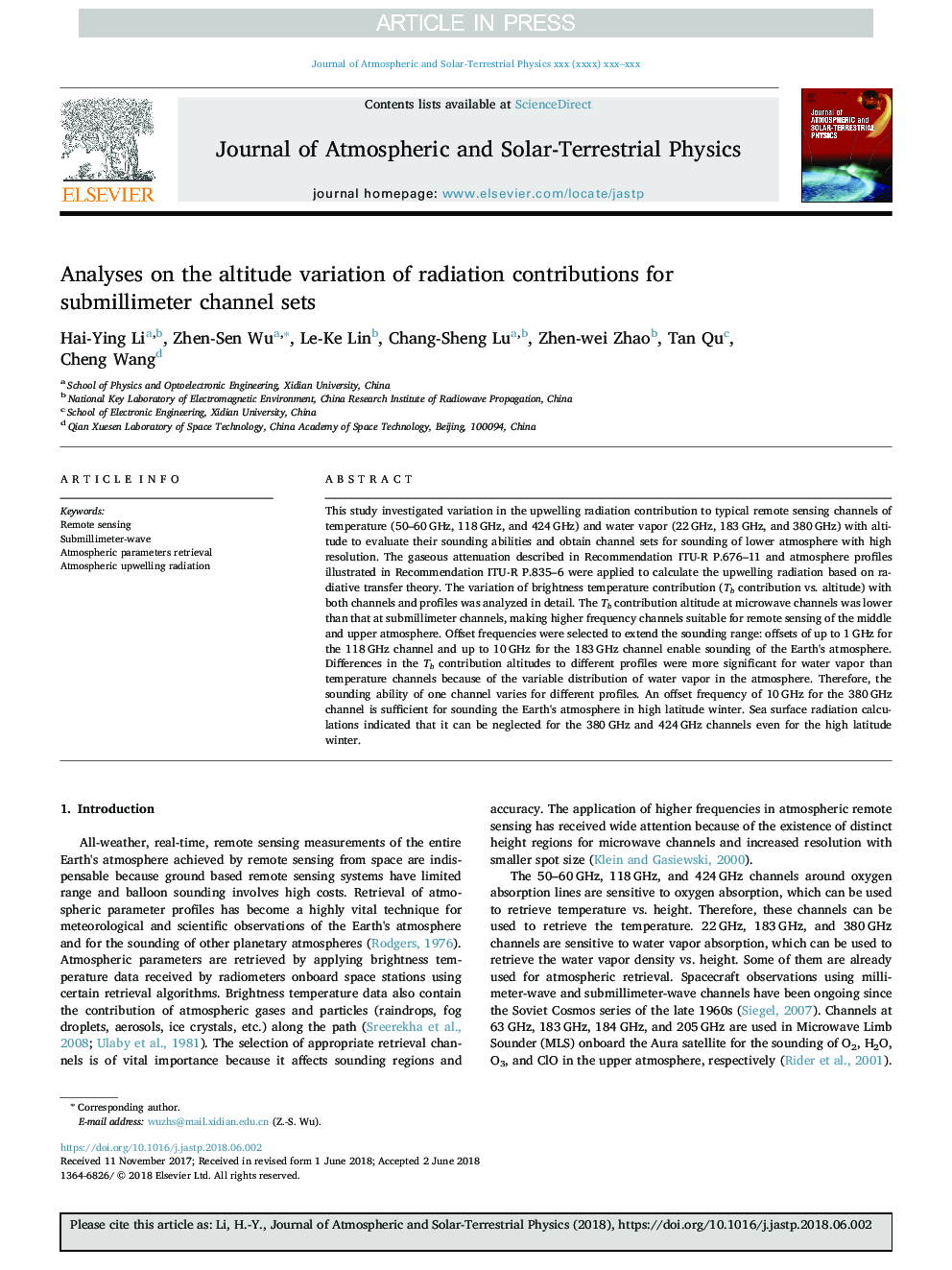| Article ID | Journal | Published Year | Pages | File Type |
|---|---|---|---|---|
| 8965511 | Journal of Atmospheric and Solar-Terrestrial Physics | 2018 | 8 Pages |
Abstract
This study investigated variation in the upwelling radiation contribution to typical remote sensing channels of temperature (50-60â¯GHz, 118â¯GHz, and 424â¯GHz) and water vapor (22â¯GHz, 183â¯GHz, and 380â¯GHz) with altitude to evaluate their sounding abilities and obtain channel sets for sounding of lower atmosphere with high resolution. The gaseous attenuation described in Recommendation ITU-R P.676-11 and atmosphere profiles illustrated in Recommendation ITU-R P.835-6 were applied to calculate the upwelling radiation based on radiative transfer theory. The variation of brightness temperature contribution (Tb contribution vs. altitude) with both channels and profiles was analyzed in detail. The Tb contribution altitude at microwave channels was lower than that at submillimeter channels, making higher frequency channels suitable for remote sensing of the middle and upper atmosphere. Offset frequencies were selected to extend the sounding range: offsets of up to 1â¯GHz for the 118â¯GHz channel and up to 10â¯GHz for the 183â¯GHz channel enable sounding of the Earth's atmosphere. Differences in the Tb contribution altitudes to different profiles were more significant for water vapor than temperature channels because of the variable distribution of water vapor in the atmosphere. Therefore, the sounding ability of one channel varies for different profiles. An offset frequency of 10â¯GHz for the 380â¯GHz channel is sufficient for sounding the Earth's atmosphere in high latitude winter. Sea surface radiation calculations indicated that it can be neglected for the 380â¯GHz and 424â¯GHz channels even for the high latitude winter.
Keywords
Related Topics
Physical Sciences and Engineering
Earth and Planetary Sciences
Geophysics
Authors
Hai-Ying Li, Zhen-Sen Wu, Le-Ke Lin, Chang-Sheng Lu, Zhen-wei Zhao, Tan Qu, Cheng Wang,
